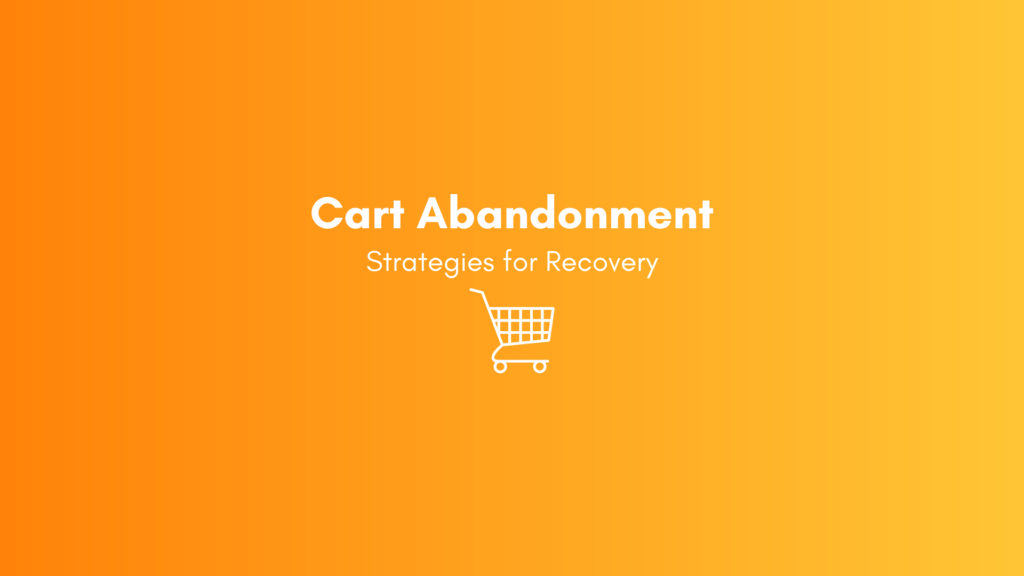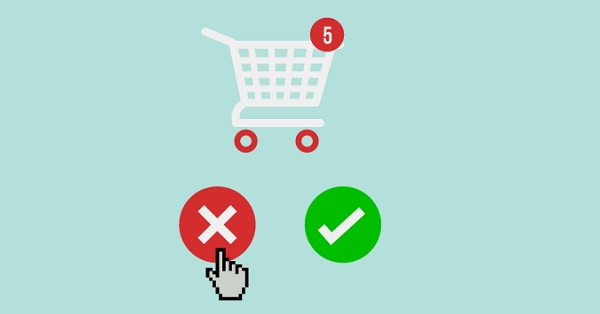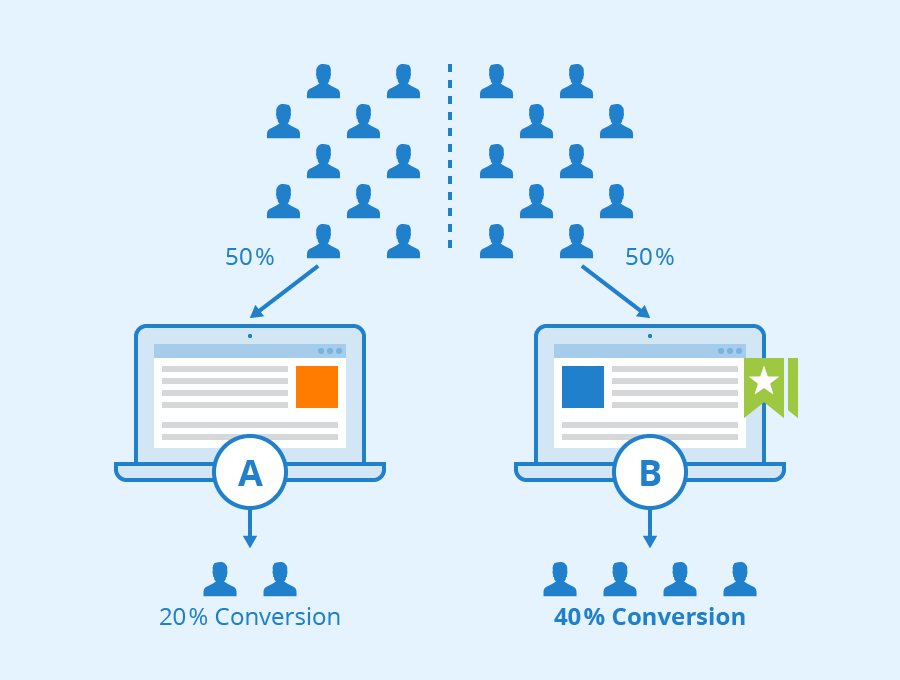Understanding Cart Abandonment: Strategies for Recovery

In e-commerce, where every click holds potential revenue, cart abandonment stands as a formidable obstacle, thwarting the efforts of businesses to capitalise on customer interest and drive conversions. However, navigating this landscape requires more than just recognition of the issue; it demands an understanding of the underlying factors at play and the implementation of strategic measures for recovery and conversion rate optimisation (CRO).

In this article, we shall decipher cart abandonment, delving deep into its intricacies, and unveiling actionable strategies tailored to revive abandoned carts and enhance overall conversion rates. Through a blend of insightful analysis, data-driven insights, and proven CRO techniques, we aim to empower businesses with the knowledge and tools necessary to conquer this challenge and tap into untapped potential in their e-commerce endeavours.
Understanding Cart Abandonment:
Cart abandonment occurs when a customer adds products to their online shopping cart but leaves the website without completing the purchase. It’s a critical juncture in the customer journey where various factors come into play, including but not limited to:
- User Experience (UX) Issues: Complicated checkout processes, lack of guest checkout options, or unexpected costs during checkout can deter customers.
- Price Sensitivity: Comparison shopping is rampant online. Even minor discrepancies in prices or unexpected fees can prompt customers to abandon their carts.
- Uncertainty and Hesitation: Lack of trust in the website, concerns about security, or simply indecision can lead to abandonment.
- Distractions and Interruptions: External factors such as sudden distractions or interruptions during the checkout process can disrupt the flow and lead to abandonment.

Statistics Speak Louder Than Words:
- According to Statista, the average global cart abandonment rate stands at a staggering 69.57% as of 2022.
- Baymard Institute’s research indicates that 18% of cart abandonments happen due to a complicated checkout process.
- Adobe’s analysis reveals that unexpected costs are the primary reason for abandonment, cited by 56% of shoppers.
Diagnostic Analysis: Identifying the Pain Points in the Checkout Process
The checkout process stands as the pivotal moment of truth. It’s the point where potential customers transition from browsers to buyers, or sadly, where they abandon their carts and leave, perhaps never to return. Understanding the nuances of this critical phase requires a diagnostic analysis to pinpoint the pain points that impede the seamless flow of conversion. Let’s delve deeper into this diagnostic process:
User Experience Evaluation:
Conducting a thorough evaluation of the checkout process from the user’s perspective is paramount. This involves navigating through the entire checkout journey as a customer would, paying close attention to every step, from adding items to the cart to completing the purchase. Look for any friction points, such as overly complicated forms, excessive required fields, or confusing navigation elements that could deter users from proceeding.

Quantitative Data Analysis:
Dive into quantitative data analytics to gain insights into user behaviour throughout the checkout process. Utilise tools like Google Analytics or specialised e-commerce analytics platforms to track key metrics such as cart abandonment rate, average time spent in checkout, and drop-off points within the funnel. Identify patterns and trends that may indicate areas of weakness or points of friction that require attention.

Qualitative Feedback Collection:
Supplement quantitative data with qualitative feedback from actual customers. Implement feedback mechanisms such as surveys, user interviews, or usability testing sessions to gather insights directly from users about their checkout experience. Pay attention to common pain points, frustrations, or areas where users express confusion or dissatisfaction.

Competitive Analysis:
Benchmark your checkout process against competitors and industry leaders to identify areas for improvement and best practices to emulate. Analyse the checkout experiences offered by top-performing e-commerce sites within your niche, paying attention to elements such as simplicity, transparency, and convenience. Identify features or strategies that resonate with customers and consider incorporating them into your own checkout process.

Technical Assessment:
Evaluate the technical infrastructure supporting your checkout process to ensure optimal performance and reliability. Assess factors such as page load times, server response times, and compatibility across different devices and browsers. Address any technical issues or bottlenecks that could disrupt the smooth flow of the checkout process and contribute to cart abandonment.

By systematically diagnosing and addressing the pain points in the checkout process through a combination of user experience evaluation, data analysis, feedback collection, competitive analysis, and technical assessment, businesses can optimise their checkout experience to reduce cart abandonment rates and maximise conversion opportunities.
Optimising Checkout Process:

Streamlining the checkout process is paramount for reducing cart abandonment rates. By minimising steps and friction points, businesses can create a smoother and more efficient experience for customers. Offering guest checkout options eliminates the need for account creation, catering to those who prefer a quick and hassle-free transaction. Incorporating progress indicators keeps customers informed about their checkout status, reducing uncertainty and encouraging them to proceed with their purchase.
Additionally, addressing security concerns by prominently displaying trust signals such as SSL certificates and secure payment badges instil confidence in customers, alleviating fears about data security and further enhancing the checkout experience.
Dynamic Remarketing and Personalisation:
Dynamic remarketing techniques play a pivotal role in cart abandonment recovery efforts by targeting customers who have abandoned their carts. Personalised retargeting ads, tailored to showcase the specific products left behind, serve as compelling reminders to customers, enticing them to reconsider their purchase decision.

Moreover, leveraging email remarketing campaigns with personalised recommendations and enticing offers adds a layer of customization, nurturing leads and encouraging them to return to their abandoned carts. By harnessing the power of dynamic remarketing and personalisation, businesses can significantly improve their chances of re-engaging customers and driving conversions.
Price Transparency and Incentives:
Price transparency is essential in building trust with customers and reducing checkout surprises. Communicating shipping costs, taxes, and any additional fees upfront ensures transparency and helps manage customer expectations. Furthermore, offering incentives such as discounts, free shipping, or limited-time offers provides added value to customers and serves as a compelling incentive to complete their purchase. By aligning pricing strategies with customer expectations and providing attractive incentives, businesses can effectively minimise cart abandonment rates and drive higher conversion rates.

Optimising Mobile Experience:
With the increasing prevalence of mobile shopping, optimising the mobile experience is critical for e-commerce success. Responsive design and mobile-friendly checkout processes ensure that customers can seamlessly navigate and complete purchases on their mobile devices. Minimising form fields and streamlining input further enhances the mobile checkout experience, reducing friction and making it easier for customers to complete their transactions.
By prioritising mobile optimisation, businesses can cater to the growing segment of mobile shoppers and capitalise on opportunities to drive conversions.
Multi-Channel Retargeting and A/B Testing:

Expanding cart abandonment recovery efforts across multiple channels, including email, social media, and display advertising, increases the likelihood of re-engaging customers who have abandoned their carts. By leveraging different touchpoints, businesses can maintain a consistent presence and reinforce the value proposition of the abandoned products.
Additionally, conducting A/B testing allows businesses to refine their recovery campaigns based on performance metrics, optimising elements such as messaging, offers, and creative assets to maximise effectiveness. Through multi-channel retargeting and continuous optimization, businesses can enhance their cart abandonment recovery strategies and drive incremental conversions.
Conclusion
In conclusion, minimising cart abandonment is of paramount importance for e-commerce businesses seeking to optimise their conversion rates and maximise revenue potential. By addressing the various factors that contribute to cart abandonment, such as checkout friction, pricing transparency, and mobile optimisation, businesses can create a seamless and engaging shopping experience for their customers. Moreover, implementing advanced strategies like dynamic remarketing, personalised incentives, and multi-channel retargeting enables businesses to re-engage customers who have abandoned their carts, turning missed opportunities into valuable conversions. Ultimately, by prioritising efforts to minimise cart abandonment, businesses can foster trust, enhance customer satisfaction, and unlock the full potential of their e-commerce platforms.






